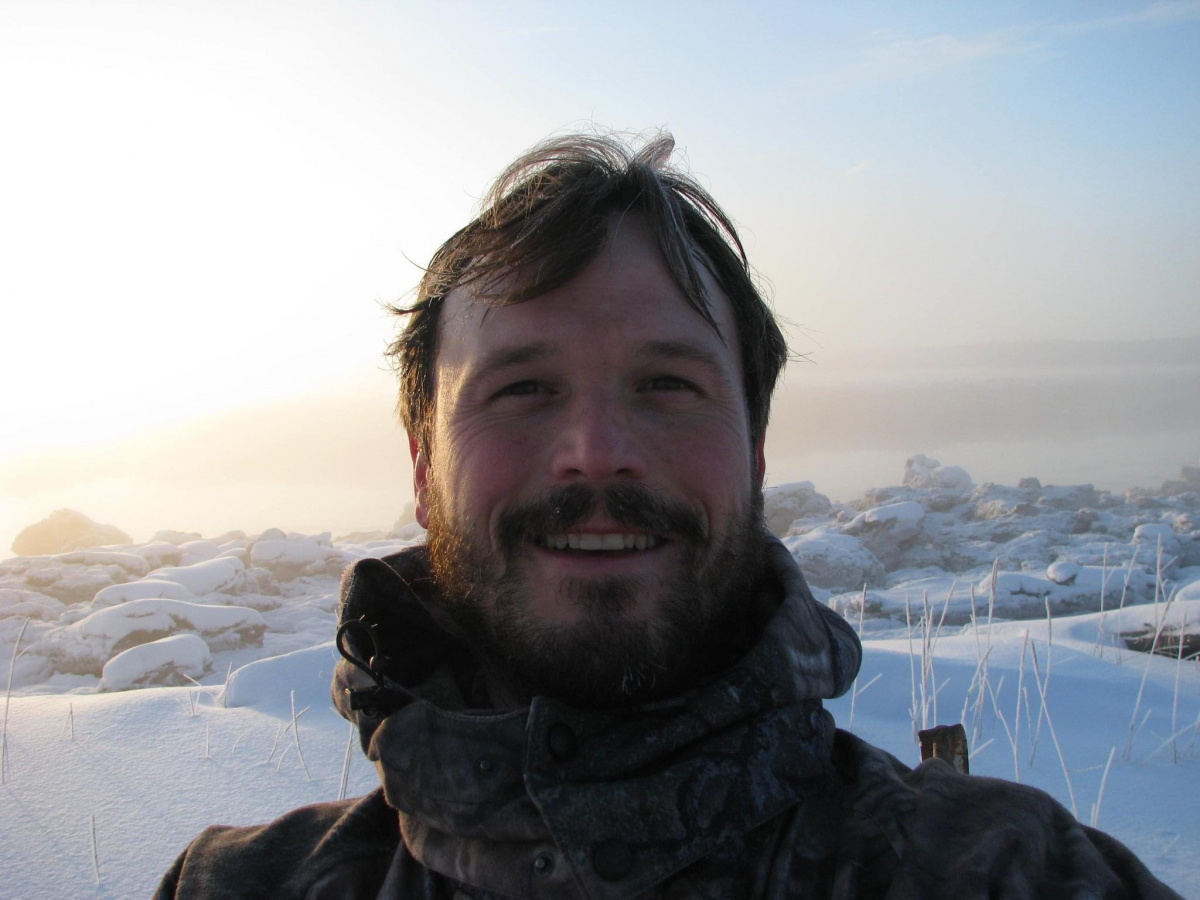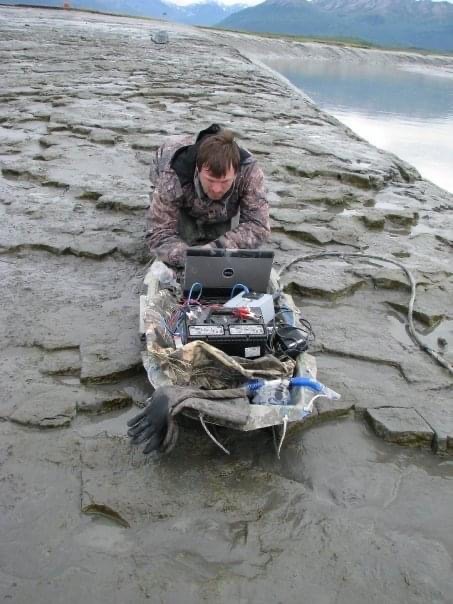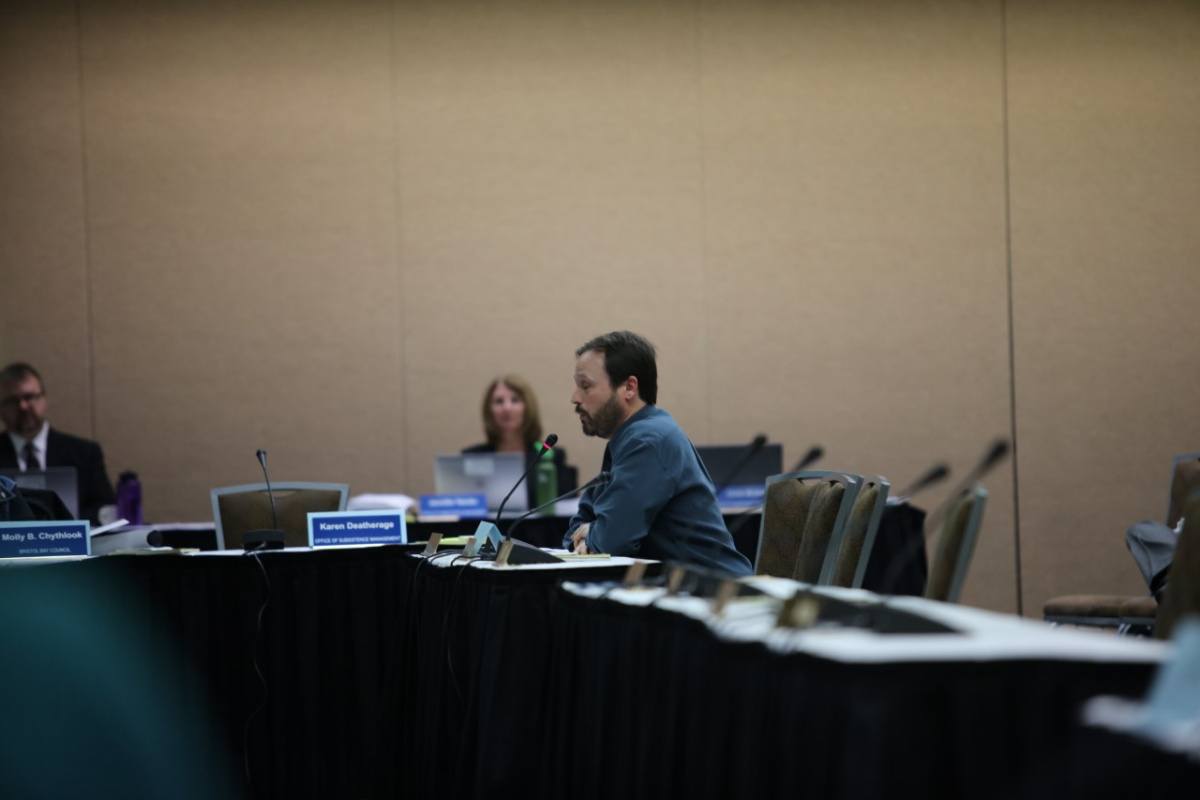You are viewing ARCHIVED content published online before January 20, 2025. Please note that this content is NOT UPDATED, and links may not work. Additionally, any previously issued diversity, equity, inclusion or gender-related guidance on this webpage should be considered rescinded. For current information, visit https://www.blm.gov/blog.
Chris McKee helps solve subsistence puzzles
The subsistence management community is small and unique to Alaska. But small and unique do not translate to simple. Take, for example, the term subsistence. How is it defined?
Trick question.
The Alaska National Interest Lands Conservation Act (ANILCA) defines it is as "the customary and traditional uses by rural Alaska residents of wild, renewable resources for direct personal or family consumption as food, shelter, fuel, clothing, tools or transportation; for the making and selling of handicraft articles out of nonedible by-products of fish and wildlife resources taken for personal or family consumption; and for the customary trade, barter or sharing for personal or family consumption."
However, while that definition is legally accurate BLM Alaska Subsistence Coordinator Chris McKee says it neglects the customs, beliefs and values woven through a subsistence lifestyle that reflect the continuation of who Alaskans are as a people.
“[The term] subsistence doesn’t encapsulate what it really means culturally and spiritually to rural Alaskans and particularly Alaska Natives,” McKee begins. “It’s hard to define generally; its more than hunting, fishing and collecting berries, though that’s one component.”
McKee says not only is subsistence unique to Alaska, the way hunting is managed in the state is also different than in our contiguous cousins down south. Put simply, in Alaska, lands are generally open to subsistence activities unless specifically closed. In the lower 48, hunting access is generally closed unless specifically opened.

There are many layers to this onion.
“ANILCA mandates a rural priority for subsistence resources for rural Alaskans (both Native and non-Native) on Federal public lands,” McKee cites the expansive 1980 law. He says people usually misunderstand that.
So how does the average Alaskan know where they fit in that equation? McKee refers back to Title 8 of ANILCA to outline it for us.
“A person is considered a Federally qualified subsistence user if they live in a rural community and have a customary and traditional use determination for a species in a given [area called a] Game Management Unit.” He clarifies, “If you live in a city, you need to hunt under state regs.” McKee explains further, “Usually rural users can hunt under both regs whereas urban users are limited to state regulations; it helps subsistence users maintain priority.”
If someone is still unsure, they can ask McKee.
His expertise runs deep. He’s been in the state for more than 30 years. He attended Alaskan universities for both his undergrad and Master’s degrees. Before coming to work for BLM in 2020, he worked for a decade at the Office of Subsistence Management (OSM) as a wildlife biologist researching Alaska’s land and water-dwelling animals that may be harvested under subsistence laws.

Further complicating things are how many people are involved in management of the 49th state’s subsistence resources, including animals and plants.
McKee explains that multiple federal agencies are tasked with managing Alaska’s subsistence resources. Two key hubs who help are the Office of Subsistence Management and the Federal Subsistence Board (FSB). OSM staff research proposed policy changes and the FSB members vote on adopting the policies using OSM research to inform their decisions.
Their number one goal is to act in the best interest of subsistence users, McKee says.
In between a proposal and a vote, he adds, is extensive research, collaboration, cross agency reviews, and input from the public. That work goes on for more than a year.
“So, the wildlife biologists consider the biological background, whether it’s moose, caribou, bears, etc.; there’s a harvest history section. Anthropological input includes a cultural knowledge and traditional practices section as well, which the anthropologists put together,” he notes.
In addition, he says, the anthropologists collect information from rural subsistence users through direct surveys, in a normal year where travel and in-person interaction are possible.
Eventually, the refined research is presented to the Federal Subsistence Board, the decision makers.

There are 8 voting members on the FSB. McKee outlined the roster. Three people are rural subsistence users appointed by the Secretary of the Interior or the Secretary of the U.S. Department of Agriculture. Five other members are agency heads working in the state from the Bureau of Land Management, the National Park Service, the U.S. Fish and Wildlife Service, U.S. Forest Service, and the Bureau of Indian Affairs.
“The agency heads must wear their subsistence hats and their agency regulatory hats, sometimes those things can conflict,” McKee provides more insight.
BLM Alaska’s State Director, Chad Padgett is BLM’s voting representative. Most proposed actions result in thousands of pages of analyses to review before making a vote; McKee works closely with the state director.
“Chad’s previous experience and familiarity with Alaskan issues makes my job that much easier. He’s already very informed,” he says.
McKee is here to guide other BLM staff and the public, too. Even if they’ve lived in Alaska their entire lives, there are often new policies being developed, and occasionally emergency orders, that may be unclear at first.
“Subsistence is a complicated issue, and there can be a variety of issues that come up over the course of a year.” He adds, “I’m here to answer any questions you have.”
Just like checking gear and the weather before heading out on a hunting or berry picking trip, it’s easy to get an update on federal regulations.
Chris McKee can be reached at (907)271-1298 or [email protected].
Melinda Bolton, Public Affairs Specialist
Related Content
Related Stories
Office
222 W 7th Avenue #13
Anchorage, AK 99513
United States

